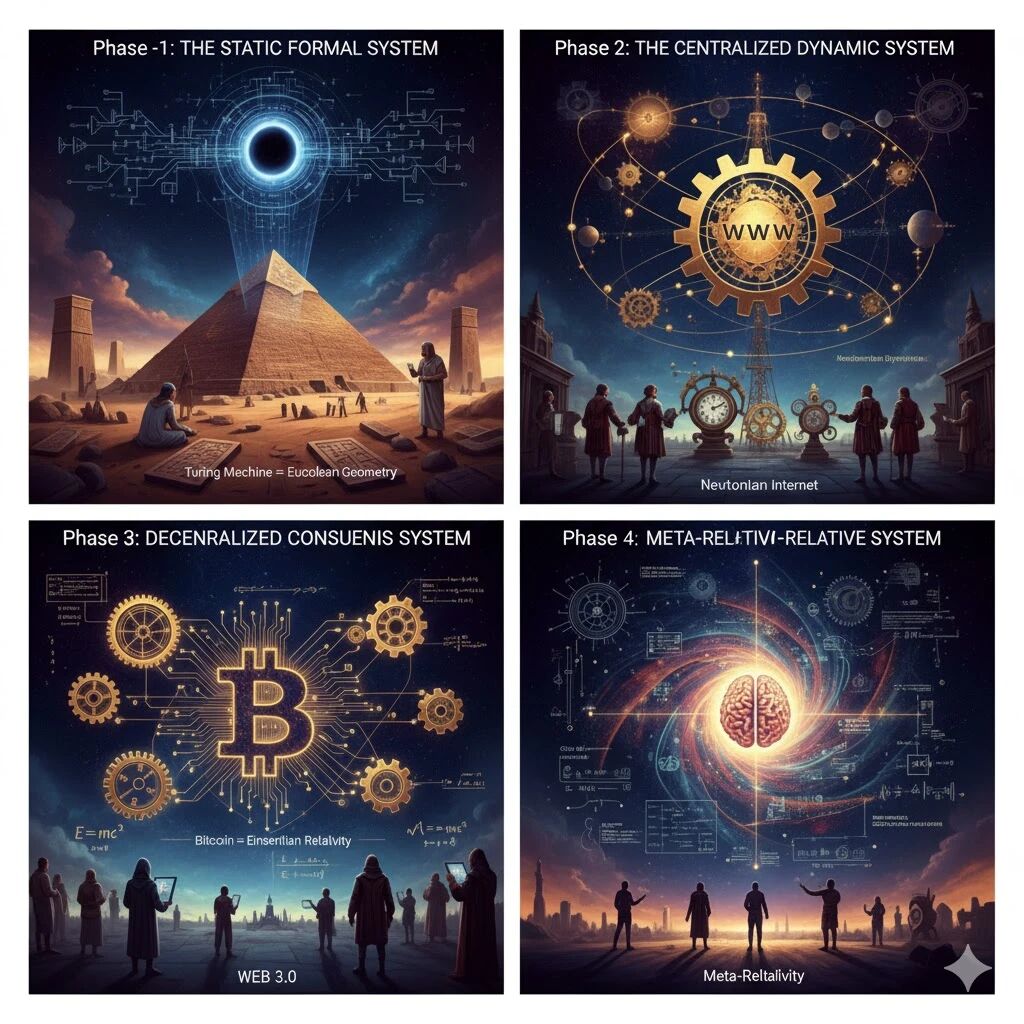
The evolution of human civilization has never been a mere accumulation of technologies — it is the leap of fundamental scientific paradigms. Every great advancement follows the same path:
Philosophical Assumption → Physical Problem → Mathematical Tool → Engineering Implementation
Geometry gave birth to pyramids and astronomy. Calculus gave birth to navigation and the industrial revolution. Relativity gave birth to nuclear energy and the space age. And today, we are witnessing another revolution of the same magnitude — Computation is shifting from “Newtonian Absolutism” to “Einsteinian Relativity.”
We once thought the Internet revolution was complete, but that was only the “Newtonian Internet.” The true breakthrough is the Einsteinian Computational Revolution brought by Bitcoin — where time and causality become the core structures of computation.
Science and computation do not evolve in isolation — they are strictly isomorphic across four phases.

This is not an analogy — it is a structural isomorphism of science.
🔷 Phase 1: Static Formal Systems — Turing Machine = Euclidean Geometry
Euclidean geometry served a static world — it described pyramid-like static structures.
The Turing Machine is the “Euclidean system” of computation:
It created formal computation, yet it could not explain the distributed real world.
🔷 Phase 2: Centralized Dynamic Systems — Internet = Newtonian Mechanics
When humanity realized the world is in motion, calculus was born, and Newton proposed absolute spacetime.
The Internet followed the same pattern:
Information can flow, but value cannot flow natively — trust depends on third parties.
🔷 Phase 3: Decentralized Consensus — Bitcoin = Relativity of Computation
Einstein solved the problem of “how to synchronize time without absolute spacetime.” Satoshi Nakamoto solved the problem of “how to establish trustworthy time without a central server.”
His breakthrough:

The “heaviest chain principle” is the speed of light in the computational universe:
🔷 Phase 4: Meta-Relativistic Systems — Toward Computation × Quantum Gravity
Einstein unified spacetime, but could not unify the observer effect.
Roger Penrose continued to ask:
Does the relationship between logic and reality depend on the observer?
In the computational world, the corresponding questions are:
This opens the direction for next-generation theoretical exploration:
We are undergoing the most important paradigm revolution in the history of computation — From the “Newtonian Internet (Centralized)” To the “Einsteinian Internet (Decentralized)”
It redefines what time is.
It redefines what money is.
It redefines how trust is generated.
It redefines the foundational structure of computational civilization.
It may become the gateway to unifying computation and physics.
We are moving from the information civilization to the value civilization, from the era of centralized authority to the era of spacetime intelligence.
This is not a trend —This is the direction of civilizational evolution.